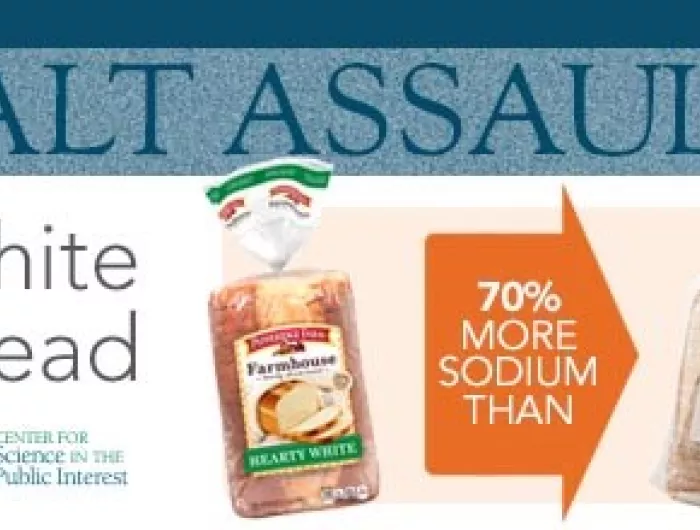Sodium levels vary widely in bread

Why we need FDA sodium-reduction plan
Many Americans do not realize that bread is the top source of sodium in the American diet. This latest edition of the Center for Science in the Public Interest’s “Salt Assault” found widely varying amounts of sodium among brands of 100% whole wheat and white breads. For instance, Whole Foods’ Organic 100% Whole Wheat Sandwich Bread has an astounding two-and-a-half times as much sodium per 100 grams as Target’s Simply Balanced 100% Organic Whole Wheat Bread. In fact, when it comes to sodium, eating one slice of the Whole Foods’ bread is like eating 22 potato chips.
Sodium levels also vary widely in white breads. Pepperidge Farm’s Farmhouse Hearty White Bread has 70 percent more sodium per 100 grams than Whole Foods’ 365 Everyday Value Classic White Bread. One slice of the Pepperidge Farm bread has as much sodium as 21 potato chips. That high sodium level was surprising to see considering that Pepperidge Farm announced a sodium-reduction program almost 10 years ago.
“It’s clear that many bakers can reduce sodium significantly,” said Jim O’Hara, CSPI’s Director of Health Promotion Policy. “The excessive amount of sodium in our food raises blood pressure, which increases the risk of heart attack and stroke. Meaningful reductions of sodium would save tens of thousands of lives and billions of dollars in medical costs every year.”
Since 1978 CSPI has urged—via petitions, lawsuits, and legislation—for the Food and Drug Administration to fulfill its vital role as a public health agency by reducing sodium in the food supply. FDA published draft voluntary guidance for industry on sodium reduction in packaged and restaurant foods last June.
“FDA needs to continue its efforts to reduce sodium in foods, and the new commissioner’s first task should be to issue final guidance for short-term sodium reduction targets for industry,” said O’Hara. “Doing so would quietly save thousands of lives each year.”

